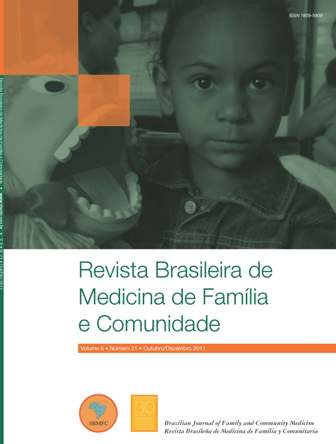Acupuncture and Primary Health Care: analysis of users’ needs and network integration
DOI:
https://doi.org/10.5712/rbmfc6(21)291Keywords:
Acupuncture, Primary Health Care, Complementary Therapies, Unified Health SystemAbstract
The introduction of integrative and complementary practices into Brazil’s Unified Health System brings back the discussion on health reform in Brazil. After the approval of the National Policy on Integrative and Complementary Practices, in 2006, acupuncture has been more present in public health services as a tool for multidisciplinary practices. Grupo Hospitalar Conceição, in the North side of Porto Alegre, in the state of Rio Grande do Sul, has a Community Health Service, which makes use of the city’s appointment center to offer its users acupuncture services. This study aimed at exploring the references for acupuncture practices in this environment. It was a descriptive study with quantitative approach. The data collection sources were the reference and counter-reference forms with referrals to acupuncture in the Community Health Service. The results showed that women and people over 50 years-old are more frequently referred to acupuncture; it also highlighted long wait lists, with significant differences in terms of length of the waiting among the health units. The study has also confirmed the initial hypothesis that pain is the main reason for referring patients to acupuncture, supporting the Western way of conceiving of health and diagnoses.Downloads
Metrics
References
Brasil. Ministério da Saúde. Grupo Hospitalar Conceição. Serviço de Saúde Comunitária. [homepage na Internet]. Porto Alegre; 2011. [acesso em 2011 Nov 15]. Disponível em: http://www.ghc.com.br/default.asp?idMenu=2&idSubMenu=5
Starfield B. Atenção Primária: Equilíbrio entre necessidades de saúde, serviços e tecnologia. Brasília: UNESCO, Ministério da Saúde; 2002.
Scognamillo-Szabo MVR, Bechara GH. Acupuntura: histórico, bases teóricas e sua aplicação em Medicina Veterinária. Cienc Rural. 2010; 40(2): 491-500. http://dx.doi.org/10.1590/S0103-84782010005000004 DOI: https://doi.org/10.1590/S0103-84782010005000004
Maike SRL, Fundamentos Essenciais da Acupuntura Chinesa. São Paulo: Ícone; 1995. p. 29-31.
Jianping L, Yanliang C, Renhua S. Chinese acupuncture and moxibustion: a practical English - Chinese Library of Traditional Chinese Medicine. São Paulo: Publishing House of Shanghai College of Traditional Chinese Medicine; 1988. p. 2-12.
Prefeitura Municipal de São Paulo. Secretaria Municipal de Saúde. Caderno Temático da Medicina Tradicional Chinesa. São Paulo; 2002. [acesso em 2010 Fev 27]. Disponível em: http://ww2.prefeitura.sp.gov.br//arquivos/secretarias/saude/areas_tematicas/0047/MTC_CadernoTematico.pdf
Brasil. Ministério da Saúde. Secretaria de Atenção à Saúde. Departamento de Atenção Básica. Política Nacional de Práticas Integrativas e Complementares no SUS. Brasília: Ministério da Saúde; 2006.
Ross J. Zang Fu: sistemas de órgãos e vísceras da medicina tradicional chinesa. São Paulo: Roca; 1994.
Lutaif S. George Soulié de Morant e Sua Tradução Ocidental do Saber Médico Chinês. 2005. [dissertação]. Pontifícia Universidade Católica: Porto Alegre; 2005.
World Health Organization (WHO). Guidelines on Basic Training and Safety in Acupuncture. 1999. [acesso em 2010 Fev 28]. Disponível em: http://whqlibdoc.who.int/hq/1999/WHO_EDM_TRM_99.1.pdf
Kurebayashi LFS, Oguisso T, Campos PFS, Freitas GF. Acupuntura na enfermagem brasileira: uma história em construção. Rev Paulista Enferm. 2007; 26 (2):127-33.
Shoji R. Imigração Chinesa e Coreana. 2004. [acesso em 2010 mar 6]. Disponível em: http://www.pucsp.br/rever/rv3_2004/p_shoji.pdf
Kang S, Razzouk D, Mari JJ, Shirakawa I. The mental health of Korean immigrants in São Paulo, Brazil. Cad Saúde Pública. 2009; 25(4): 819-26. http://dx.doi.org/10.1590/S0102-311X2009000400013 DOI: https://doi.org/10.1590/S0102-311X2009000400013
Gonçalves RB. O sincretismo de culturas sob a ótica da arquitetura vernácula do imigrante japonês na cidade de Registro, São Paulo. An Mus Paul. 2008; 16(1): 11-46. http://dx.doi.org/10.1590/S0101-47142008000100002 DOI: https://doi.org/10.1590/S0101-47142008000100002
Conselho Regional de Farmácia do Estado de São Paulo. Mais uma conquista: Acupuntura é especialidade Farmacêutica. 2009. [acesso em 2010 mar 10]. Disponível em: http://www.crfsp.org.br/joomla/index.php?option=com_content&view=article&id=1839:mais-uma-conquista-acupuntura-e-especialidade-farmaceutica-&catid=40:noticias&Itemid=60
Brasil. Senado Federal. Constituição da República Federativa do Brasil de 1988. Brasília; 1988.
Brasil. Ministério da Saúde. Portaria nº 971, de 3 de maio de 2006. Aprova a Política Nacional de Práticas Integrativas e Complementares (PNPIC) no Sistema Único de Saúde. Brasília; 2006. [acesso em 2010 fev 28]. Disponível em: http://portal.saude.gov.br/portal/arquivos/pdf/PNPIC.pdf
Prodanov CC, Freitas EC. Metodologia do Trabalho Científico: métodos e técnicas da pesquisa e do trabalho acadêmico. Novo Amburgo: Feevale; 2009. 288p.
Rouquayrol MZ, Almeida Filho N. Epidemiologia e Saúde. 5ª ed. Rio de Janeiro: Medsi; 1999.
Viacava F, Travassos C, Pinheiro R, Brito A. Gênero e Utilização de Serviços de Saúde no Brasil. [acesso em 2011 set 21]. Disponível em: http://ris.bvsalud.org/finals/BRA-3020.pdf
Downloads
Published
How to Cite
Issue
Section
License
By submitting a manuscript to the RBMFC, authors retain ownership of the copyright in the article, and authorize RBMFC to publish that manuscript under the Creative Commons Attribution 4.0 license and identify itself as the vehicle of its original publication.















